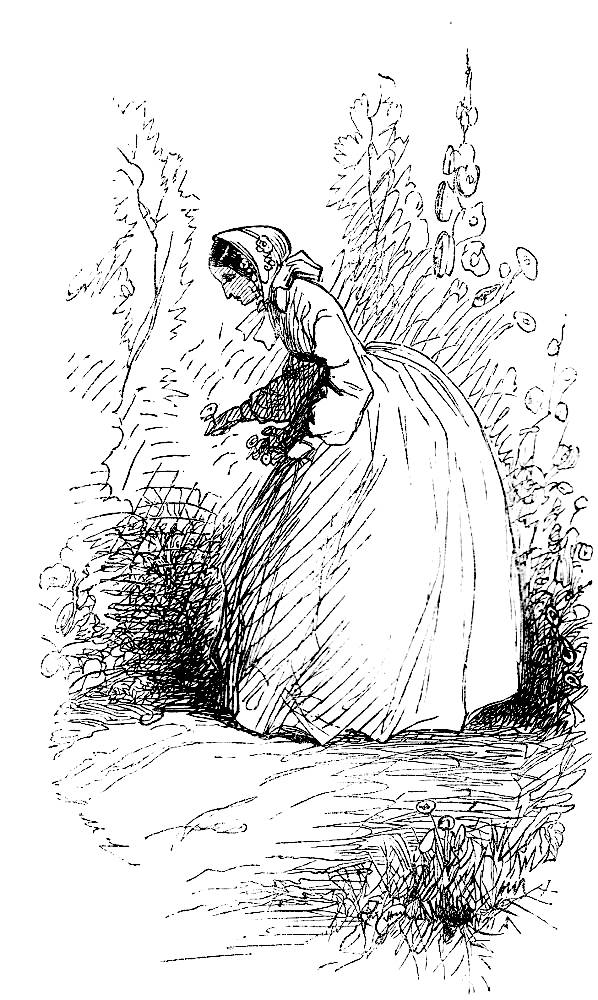Mrs. Rubelle, not at Limmeridge at all, but gathering flowers at Blackwater
John McLenan
12 May 1860
8.8 cm high by 5.9 cm wide (3 ¾ by 2 ¼ inchess), vignetted.
Uncaptioned headnote vignette for the twenty-fifth weekly number of Collins's The Woman in White: A Novel (12 May 1860), 293; p. 163 in the 1861 volume.
[Click on the image to enlarge it.]
The illustration points towards the stunning revellation at the curtain of the number: neither Mrs. Rubelle nor Marian Halcombe has left Blackwater Park; their going to Limmeridge was a ruse to get Laura to travel by rail to the Foscos' London residence in St. John's Wood.
Scanned image and text by Philip V. Allingham.
